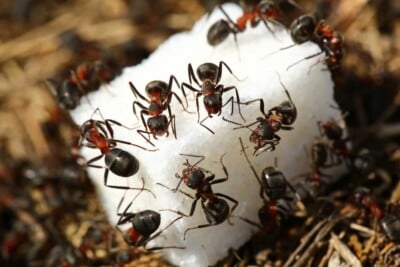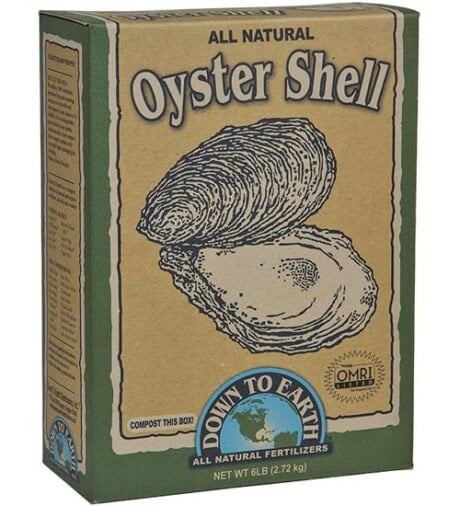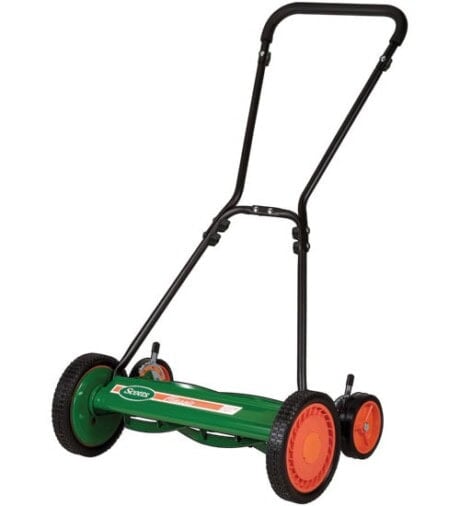Organic Overview
What’s not to like about a healthy, organic lawn? It’s relatively cheap. It’s better for the environment and it takes less work than your traditional turf.


#1 Soil Tester
Available Here
Soil Test Kit
You'll appreciate this easy, fast and fun way to achieve better growing results.
$17.95Learn moreOrganic lawn care depends on a single principle: that a lush, healthy lawn will be able to resist most weeds, diseases, and insects. The goal of such lawn care, therefore, is to promote health. This means that grass is encouraged to grow thickly above-ground and deeply below. Where a conventional lawn is defended against pests (especially weeds) by preemptive spraying, the organic lawn is defended by its own health and by appropriate action if problems do occur.
The health of your lawn depends on four factors: good soil, appropriate plantings, thick grass, and regular maintenance.
Get your lawn off to a great start and keep it productive with premium quality soil amendments. Need advice? Our Soils Blog provides the ideas, information and practical experience you need to get the job done right.
Soil
It’s so obvious it seems barely worth saying, but healthy soil will support healthy grass, and unhealthy soil won’t. Healthy soil provides air, water, and nutrients to plants. To do this, it must have good structure and contain adequate nutrients. Soil structure refers to the size, clumping, and spacing of the particles that make up the soil, and plays a critical role in root growth and in access to water, oxygen, and nutrients. The soil must be able to retain water long enough for plants to get what they need, but it must also allow the water to drain, so that the roots have access to oxygen. (Yes, roots need oxygen too.)
Many city and suburban lawns throughout North America have very poor soil. During construction of both subdivisions and individual homes, the upper layer of fertile topsoil is frequently hauled off or just worn away by machinery, which compacts what is left. Landscapers rarely replace topsoil completely, so even if you have a new lawn, your soil may be substandard.
As for those who move into established neighborhoods, most inherit a lawn that may have been planted years before, in machine-compacted earth. Years of ordinary use — lawn mowing, badminton games, foot traffic, barbecue parties — continue to compact the soil, reducing the movement of air and water within it, cramping the root system of the grass and restricting its access to nutrients.
Most of our lawn-care habits do little to nourish the soil. Since many North Americans were trained to rake up leaves and grass clippings, our lawns have been deprived of the only organic matter that would naturally replenish them and the soil beneath them. Since chemical fertilizers generally supply nutrients without affecting soil structure, they do not improve the soil or its ability to provide what the grass needs.
The first order for a healthy lawn, then, is to test the soil and if necessary, rebuild it, using soil amendments to improve its structure and fertilizer to provide nutrients.
Appropriate Plantings
One of the major reasons lawns actually end up damaging the environment is that frequently the grasses they’re composed of are an extremely poor match for the region in which they find themselves. As a result, homeowners are always playing catch-up, trying to compensate the grass for what the environment doesn’t provide.

LOW MAINTENANCE MIX
Grasses & Flowers
Combines native grasses with a beautiful selection of drought-tolerant plants.
$17.95Learn morePerfect for backyards, road ditches and golf course roughs! This drought-tolerant mix combines native grasses with a beautiful selection of both annual and perennial wildflowers. Remains green through late fall and will grow to a mature height of 6 to 12 inches — mow once or twice a year, if at all!
History is largely to blame here, history and inertia. The idea that lawns can be an environmental hazard is only just making its way out of the crackpot’s closet to mingle with the general public. Most lawns were planted, therefore, without regard for environmental considerations. Relevant criteria for choosing grass were cost, growing time, color, and resilience. Once people found something that worked, it was used throughout the country, which is why you’ll find Kentucky bluegrass for sale in Montana. See The History of Lawns for more on this.
Historically, people planting lawns in subdivisions wanted a grass that would cost little, grow fast (especially in new neighborhoods where residents want that lawn NOW!) and stand up to abuse. Since many lawns aren’t planted in situ at all but arrive on the back of a truck and are rolled out like a series of narrow carpets, they also need to be grasses that will put up with that kind of treatment and like it. Not all will be so obliging.
But the cheapest grass to plant (or sod to lay) may well not be the cheapest to maintain, especially if it’s a grass that is demanding in terms of water, soil acidity, or soil texture. The result, frequently, is that since it’s not really healthy, it loses its lustrous color but gains unwelcome visitors in the form of weeds, insects, and diseases which take advantage of its inability to hold its own. The luckless homeowner throws fertilizer at the grass in an attempt to coax it back to the green it displayed in its youth, and piles pesticides on it to beat back the insects and fungi that infest it.
Just as “cheap-to-install” may backfire later, so “quick-to-grow” may not be all it’s cracked up to be. The frequent mowing required by a quick-growing grass isn’t just a chore loathed by millions, it’s also a major cause of pollution. The over-hyped gasoline-powered mowers preferred by most North Americans release a staggering range and amount of pollutants into the atmosphere, and grass-clippings are overwhelming landfills.
It pays, in other words, to find a grass that’s suitable for your corner of the world. A regionally appropriate grass (or grass mix) will tolerate local weather and soil conditions more easily than imported varieties, and it will therefore need less watering, less fertilizer, and fewer pesticides. Fortunately, several companies have been at work on this problem, developing grass mixes that grow more slowly in hot weather thus requiring less water. (See Identifying and Choosing Grass Types under Sites & Sources.)

Thick, Deep-Rooted Grass
In lawns and sports fields, weeds are often the result of poor quality turf, rather than the cause of poor turf. – Richard L. Duble, Turfgrass Specialist, Texas A&M University
Thick grass crowds out weeds; thin grass sits there, inviting invasion. Weeds are incredibly opportunistic and will move into any bare spot they can find, but even weeds need at least minimally attractive conditions including space and light. Thick grass deprives them of both. Beating back weeds therefore requires cultivating competitors, in this case grass. Indeed, the first line of defense against weeds is a thick, healthy lawn.
One note: it doesn’t count if your lawn is thick but shorn as close as a 1950’s crew-cut. Shave it close, and once again you’re inviting problems: exposing grass roots and soil to summer heat damages the grass and increases evaporation, while also letting weeds that have managed to sprout find the light they need to take off — and take over. So you only get points for thick grass if it’s well above putting-green length.

FREE SHIPPING!
RainWizard 50
Captures runoff from your roof and stores it for a not-so rainy day. Made in the USA!
$129.95Learn moreHere’s a rainwater collection system that’s no-fuss — with a touch of magic. The Rain Wizard 50 gallon rain barrel captures runoff from your roof and stores it for a not-so rainy day. When your garden needs the extra moisture, just hook a hose to the brass spigot.
Deep roots are one of the signs of a healthy lawn, and they do a great deal to keep it healthy. Deep roots allow a plant to reach water for a long time after rain or irrigation, helping to protect the grass from drought. Since a plant can access nutrients only as far away as its roots reach, a healthy, deep root system gives grass access to more nutrients, reducing the need for fertilizer.
Like most of us, grass will take the easy way out if there is one, so it will only bother to extend its roots deep into the soil if it needs to. Quick-release synthetic fertilizers provide mega-doses of nutrients near the surface of the soil, so lawns brought up on them rarely develop the moxie (or roots) to dig deep for food. They may not even trouble themselves to develop a thick root system, if they’re fed often on a rich diet. After all, why bother?
Regular Maintenance
Okay, we admit it: an organic lawn requires care. So what’s new? So does any lawn.
In brief, lawn maintenance falls into two types. The first is your once-or-twice-a-year stuff like fertilizing or aerating, things necessary to improve or maintain soil structure or content. The organic take on this is to do these jobs in a timely manner so that they have maximum, long-term impact, thus reducing the need for extra fertilizing or extra care during the growing season. These tasks are covered in Seasonal Lawn Maintenance.
The second type of maintenance is what comes to mind when most of us think of lawn care, and there are three basic rules for these weekly chores: water deep, mow high, and let the clippings lie. Watering deeply (and infrequently) encourages roots to go deep as well, seeking the water and nutrients they need. Mowing high (about three inches or so) leaves a larger grass-blade surface to perform photosynthesis (which feeds the roots) and helps shade the soil, thus protecting roots, conserving water, and discouraging weeds. Letting grass clippings stay on the lawn is the simplest way to provide needed nutrients and organic matter to the soil. For more on these weekly lawn tasks, see Regular Lawn Maintenance.

















